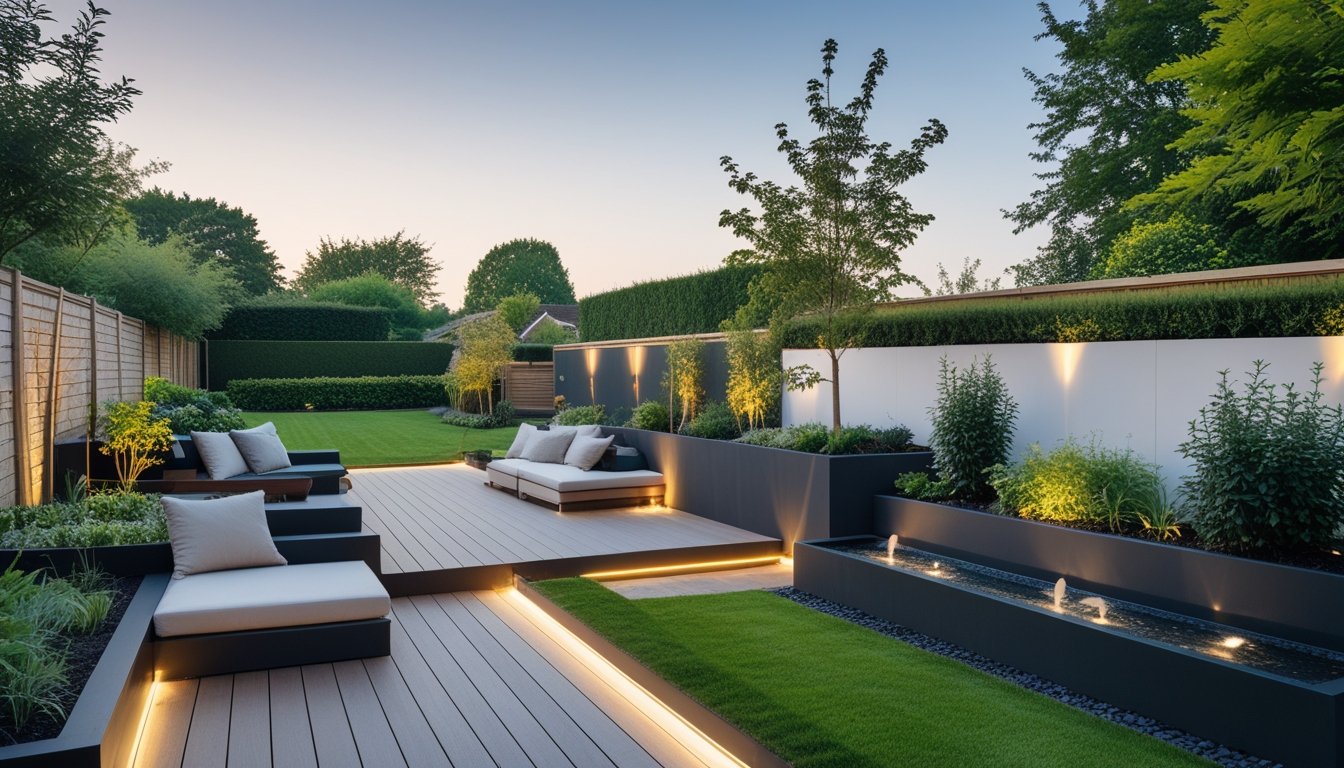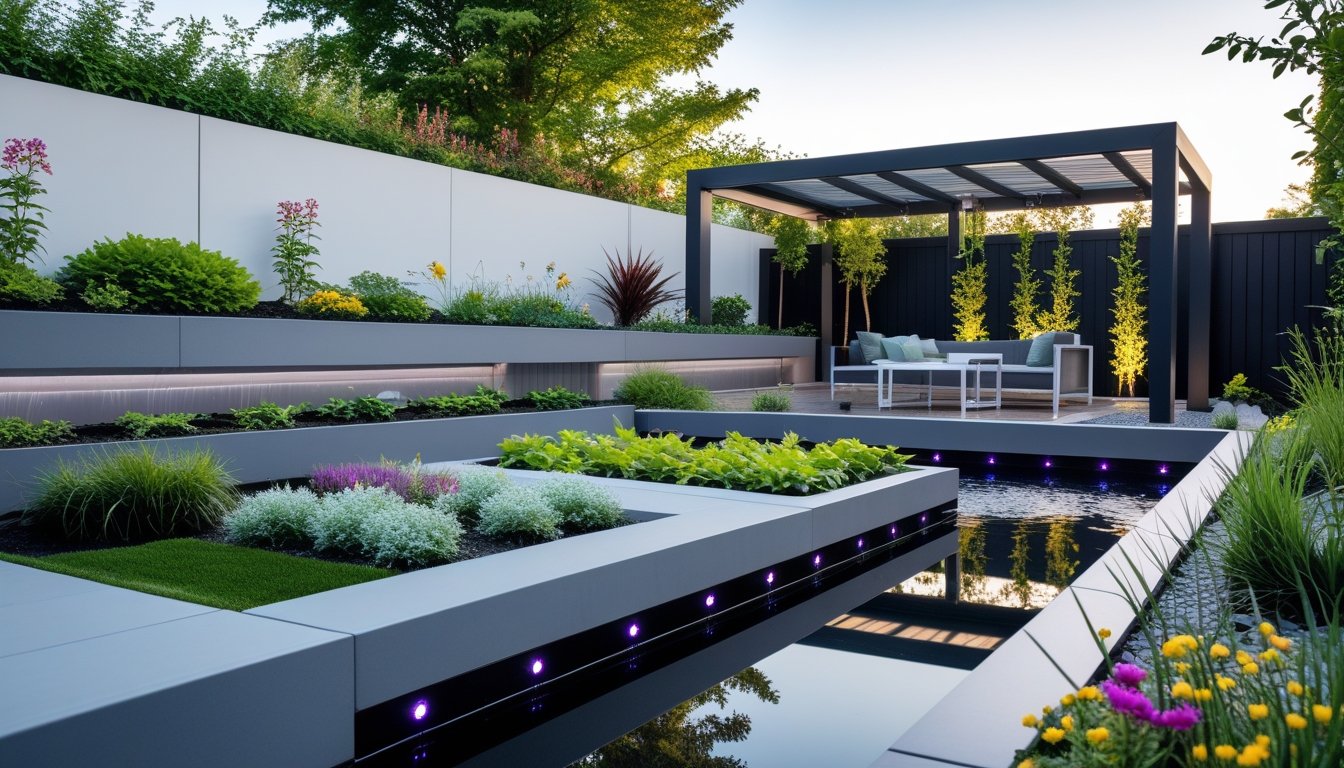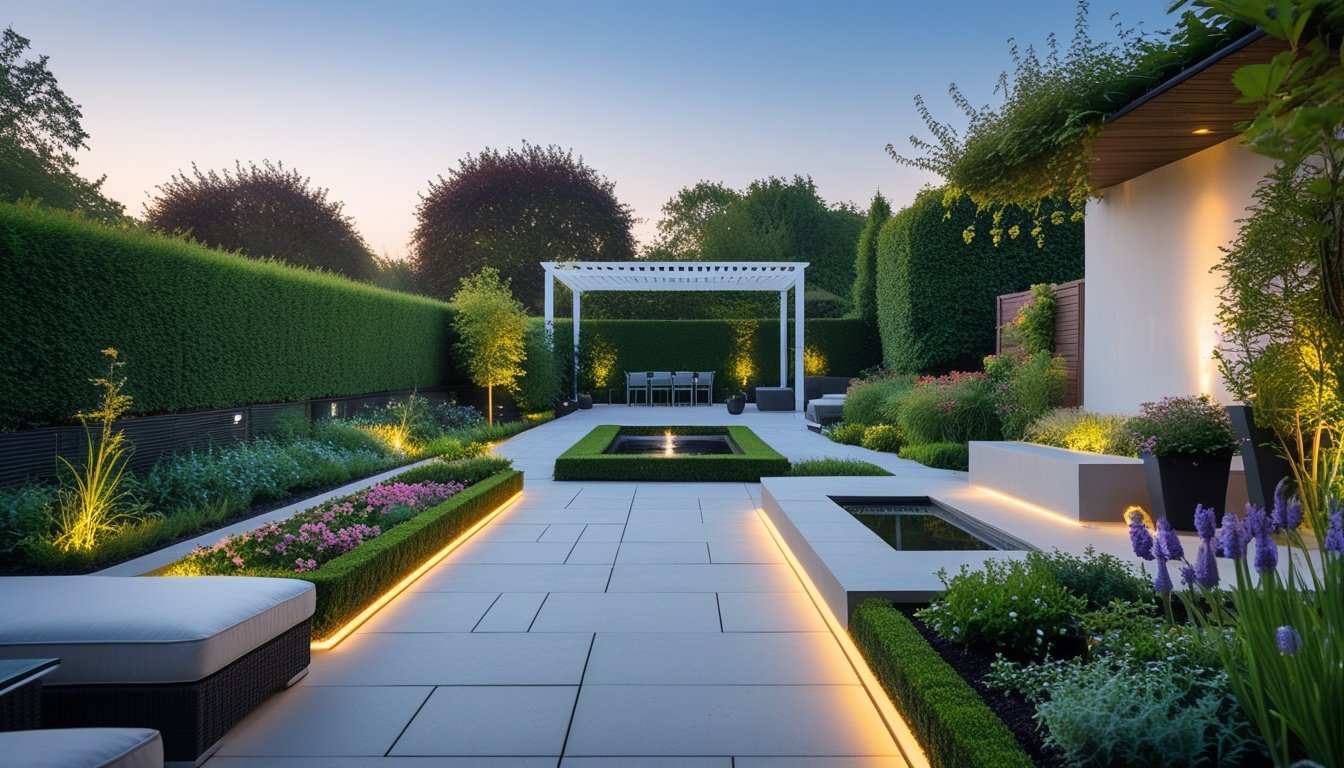Late updated: 14 Jul 2025 18:07
Written by: Oliver Bennett
Enhancing Your UK Garden With Modern Features: Transform Your Outdoor Space
Enhancing your UK garden with modern features involves blending aesthetic beauty with practical functionality. Modern garden designs thrive on clean lines, minimalistic features, and innovative elements that cater to personal tastes while adhering to current trends. By integrating contemporary elements such as sleek decking, water features, and subtle lighting, we can transform outdoor spaces into serene, yet stylish retreats.

Modern UK gardens also prioritise sustainability and low-maintenance plants, ensuring that outdoor spaces remain beautiful without demanding excessive upkeep. Whether we choose to incorporate vertical gardens in urban areas or create wildlife-friendly sanctuaries in our backyards, there's a myriad of ways to elevate our gardens.
With creative landscaping solutions and design innovations, any garden can be transformed into a space that perfectly balances modern aesthetics with natural harmony. Embracing these features not only enhances the visual appeal but also enriches our outdoor living experiences.
Key Takeaways
- Modern features combine style with functionality.
- Sustainable and low-maintenance options are key.
- Innovative solutions enrich outdoor spaces.
Modern Garden Design Essentials
Modern garden design seamlessly blends aesthetics with functionality. Our focus is on an elegant blend of natural and contemporary materials, while also fostering biodiversity and sustainability in the garden space. We explore key design principles and practical implementations for a truly captivating landscape.
Core Principles of Modern Garden Design
In modern garden design, simplicity and functionality take centre stage. We prioritise minimalism with clean lines and geometric shapes that provide a structured and organised look. The usage of space is optimised to ensure easy maintenance and a clutter-free environment.
The beauty of a modern garden lies in its balance. We might use open spaces combined with strategically placed elements like raised beds or colourful flower beds. This combination enhances visual appeal while maintaining a coherent design.
Incorporating Modern Materials and Clean Lines
Contemporary materials like concrete, corten steel, and wood are staples in modern gardens. These materials are not only durable but also lend a sleek, modern look. We often use concrete for paths and corten steel for planters to create defined spaces that align with our clean line ethos.
Wood is a versatile material that adds warmth to the garden without compromising on style. Using these materials in conjunction helps create a sophisticated outdoor space that marries resilience with modern aesthetics.
Creating Focal Points With Garden Features
One effective method to enrich our design is through distinctive garden features. Choosing elements like water features or contemporary sculptures creates a strong focal point. Evergreens or ornamental grasses can also serve as natural focal points, providing interest year-round.
Raised garden beds for a kitchen garden not only offer functionality but also add a stylish feature. By incorporating these elements, we create layers and depth, turning our garden into a captivating landscape that invites relaxation and reflection.
Enhancing Biodiversity and Sustainability
Modern garden design doesn’t just focus on aesthetics but also on creating a sustainable and biodiverse environment. We integrate native plants, succulents, and ornamental grasses to support local wildlife. These plants often require less maintenance and water, promoting a sustainable lifestyle.
Attracting bees and other pollinators is essential for a thriving sustainable garden. By creating habitats for these creatures, we contribute positively to the ecosystem. This focus ensures that our gardens are not just beautiful, but also eco-friendly and sustainable.
Innovative Features for Contemporary Gardens

Modern gardens combine aesthetics and functionality by incorporating innovative elements that enhance the overall outdoor experience. Key areas to focus on include integrating water features, enhancing garden lighting, arranging structures, and prioritising sustainable solutions.
Integrating Water Features and Ponds
Incorporating water features like ponds or waterfalls brings not only visual appeal but also ecological benefits. Water features contribute to a tranquil atmosphere, encouraging biodiversity by attracting wildlife like birds and insects to gardens. Modern water features often include energy-efficient pumps and filters that ensure sustainability.
Introducing smaller elements like bird baths can create focal points without dominating the space.
Examples of Popular Water Features:
- Waterfalls
- Ornamental ponds
- Bird baths
The sound of flowing water offers a soothing backdrop, making outdoor spaces feel serene and inviting.
Garden Lighting and Outdoor Entertaining Spaces
Lighting plays a crucial role in transforming gardens into evening sanctuaries. Strategically placed garden lighting not only enhances aesthetics but also extends usability into the night. Using LEDs or solar-powered lights ensures energy efficiency.
For those who enjoy outdoor entertaining, creating dedicated spaces with features like decking, patios, or fire pits provides comfort and warmth. These elements offer ideal settings for gatherings, whilst garden lights illuminate paths and seating areas, ensuring safety and ambience.
Choosing and Arranging Garden Structures
Structures such as pergolas and trellises introduce vertical interests. Climbing plants or vertical gardens can transform these elements into lush, living walls. These features maximise space, particularly in smaller gardens, by adding dimension and opportunities for planting.
A thoughtful arrangement of garden ornaments, like modern sculptures, complements landscaping elements. Outdoor furniture provides practical and stylish seating. An outdoor kitchen might be added for those who enjoy alfresco dining, creating an integrated and functional outdoor area.
Smart and Sustainable Gardening Solutions
Our approach to sustainability focuses on smart solutions like rainwater harvesting and automated irrigation systems. These methods prioritise water conservation, reducing waste through efficient water usage.
Permeable paving enables rain gardens that absorb runoff, supporting the natural ecosystem. Using organic gardening practices further enhances sustainability.
Smart irrigation systems tailor water use to the garden’s specific needs, providing optimal hydration with minimal effort. These innovations contribute to reduced garden maintenance, allowing us to enjoy lush landscapes without extensive manual effort.
Frequently Asked Questions

Modernising a UK garden involves embracing stylish designs that maximise space and function. We'd like to address some popular queries to help you achieve a beautiful, contemporary outdoor space.
What are some contemporary garden design ideas for small spaces?
For small spaces, vertical gardens and hanging planters offer a practical solution. Incorporating mirrors can create an illusion of depth, making the area feel larger. Use space-saving furniture which can be folded or stacked to optimise room.
How can I create a low-maintenance modern garden?
Choose hardy, drought-tolerant plants like sedums or ornamental grasses. Install automated irrigation systems to take the guesswork out of watering. Minimalist designs with larger paving stones can reduce the need for constant upkeep.
What are the key elements of minimalist contemporary garden design?
Simplicity and clean lines are central to minimalist designs. This often involves limited plant varieties with a focus on texture and colour contrast. Water features or sculptures can provide a focal point without overwhelming the space.
Can you suggest some modern features that are both aesthetic and practical for my garden?
Lighting enhances both aesthetics and security. Motion-sensor lights or solar garden lights are environmentally friendly options. Raised beds or planters can provide easy access to crops while adding structure and height.
What types of garden styles are popular in modern UK landscape design?
The use of sustainable materials and bold geometric shapes is trending. Wildlife-friendly gardens that incorporate native plants and habitats are gaining popularity. Mix of traditional elements like heritage roses with modern layouts is a common approach.
What should I look for when choosing modern garden furniture to complement my outdoor space?
Select furniture that matches the garden’s overall aesthetic and uses weather-resistant materials like aluminium or treated wood. Modular sets offer versatility, allowing reconfiguration for different occasions. Comfort and longevity are key considerations to ensure ongoing enjoyment.
